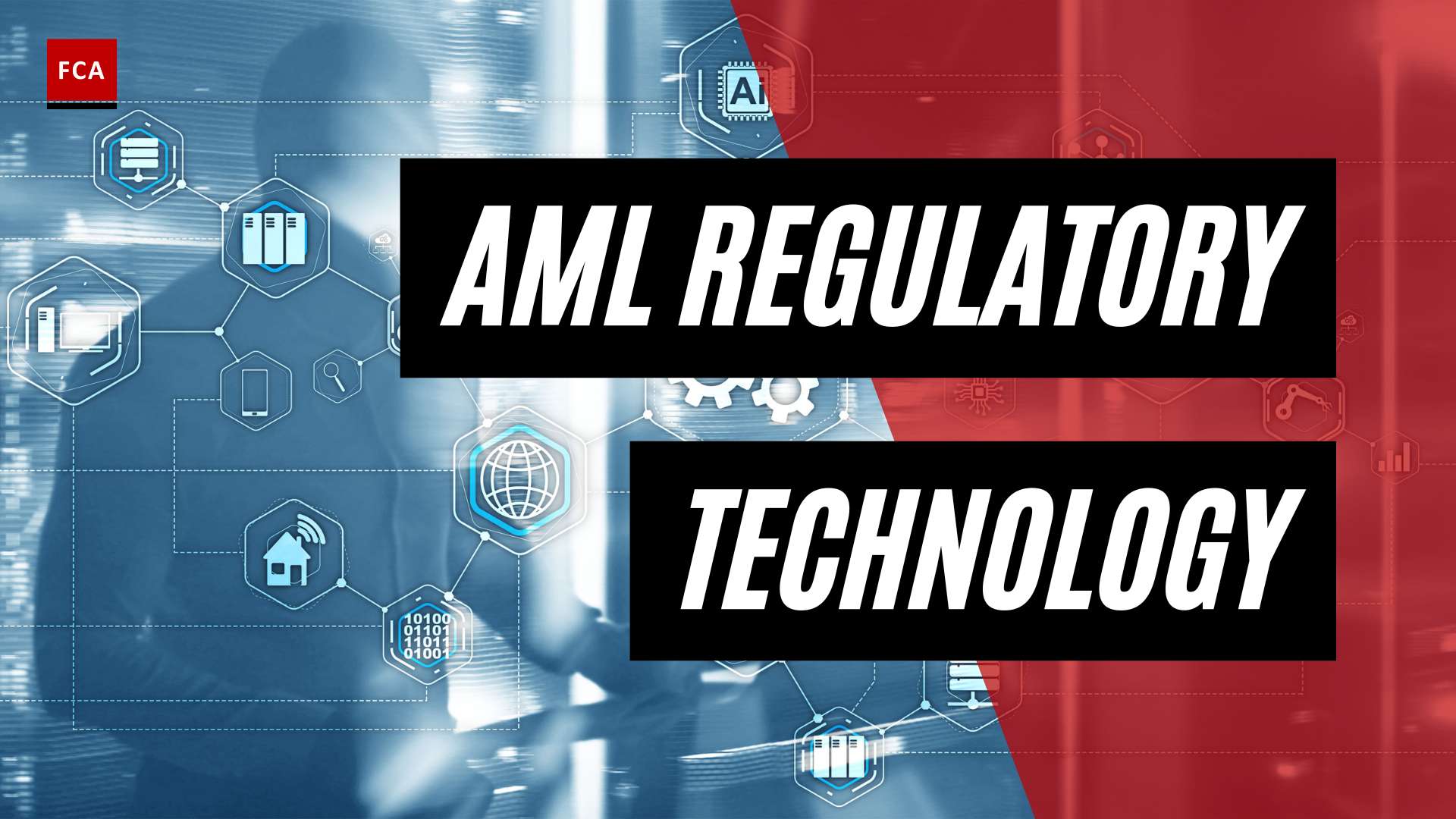Understanding Money Laundering in the Banking Sector
To fully comprehend the implications of money laundering in the banking sector, it is essential to understand what money laundering is and the importance of combating this illicit activity.
What is Money Laundering?
Money laundering involves a series of steps aimed at disguising the origins of illicitly obtained funds, making them appear legitimate. It typically consists of three key stages: placement, layering, and integration. In the placement stage, illegal funds are introduced into the legitimate financial system. The layering stage involves complex transactions to obscure the audit trail and create confusion. Finally, in the integration stage, the laundered funds are reintroduced into the financial system through additional transactions until they appear “clean” (Financial Crimes Enforcement Network).
Money laundering is not a victimless crime. It enables various criminal activities, including drug trafficking, terrorism financing, corruption, and tax evasion. By disguising the true origin of funds, money launderers attempt to legitimize the proceeds of illicit activities, allowing criminals to enjoy the benefits of their ill-gotten gains while evading detection and prosecution.
Importance of Combating Money Laundering
The fight against money laundering is crucial for several reasons. First and foremost, it is a matter of global security, as money laundering plays a significant role in facilitating and financing serious crimes. By combating money laundering, law enforcement agencies can disrupt criminal networks and prevent the further proliferation of illicit activities.
Moreover, money laundering poses a serious threat to the integrity of the financial system. Illegitimate funds flowing through banks and other financial institutions can undermine trust, disrupt fair competition, and erode confidence in the stability of the global economy. The exposure of financial institutions to money laundering risks can lead to severe reputational damage, financial penalties, and even criminal prosecution.
To address this pervasive issue, governments and regulatory bodies have implemented stringent money laundering laws and established strong regulatory frameworks. Financial institutions play a vital role in this fight by implementing robust anti-money laundering programs and adhering to strict reporting obligations. The Bank Secrecy Act (BSA) in the United States is one such legislative measure that has continuously evolved to equip law enforcement and regulatory agencies with effective tools to combat money laundering.
Efforts to combat money laundering extend beyond national boundaries. International collaboration and supervision are crucial in tackling this global issue. Countries must work together to share information, harmonize regulations, and develop innovative solutions to stay ahead of increasingly sophisticated money laundering techniques. The International Monetary Fund (IMF) and other organizations actively support these efforts, emphasizing the need for collective action and innovation in the fight against money laundering (IMF Blog).
In conclusion, understanding money laundering and recognizing the importance of combating it is essential for the banking sector. By comprehending the techniques used, identifying red flags, and implementing robust anti-money laundering measures, financial institutions can contribute to the prevention and detection of money laundering activities, safeguarding the integrity of the financial system and promoting global security.
Red Flags for Money Laundering in the Banking Sector
In the battle against money laundering, banks play a crucial role in detecting and preventing illicit activities. By being vigilant and aware of red flags, financial institutions can help disrupt money laundering schemes and protect the integrity of the banking system. Here are some common red flags for money laundering in the banking sector:
Large Cash Transactions
High-value transactions, especially those conducted in cash, are significant red flags for potential money laundering activities. The FDIC emphasizes that large cash transactions can be indicative of attempts to conceal the origin of funds. Money launderers may split transactions into smaller amounts to avoid reporting requirements, a practice known as structuring.
Banks should closely monitor and scrutinize cash transactions that exceed certain thresholds to ensure compliance with anti-money laundering regulations. Implementing robust reporting mechanisms and conducting thorough customer due diligence can help identify suspicious activities and mitigate the risks associated with large cash transactions.
Wire Transfers to and from High-Risk Jurisdictions
Wire transfers to and from high-risk jurisdictions are another red flag for potential money laundering. Financial institutions should exercise caution when processing transactions involving countries known for weak anti-money laundering measures or a high incidence of illicit financial activities.
Banks should implement enhanced due diligence measures when dealing with wire transfers involving high-risk jurisdictions. By assessing the nature and purpose of these transactions, financial institutions can identify and report suspicious activities to the appropriate authorities. Effective transaction monitoring systems and close collaboration with regulatory bodies are essential in combating money laundering in the banking sector.
Frequent Deposits from Unknown Sources
Frequent deposits to a customer’s account from various unknown sources can raise suspicions of money laundering. Sudden changes in a customer’s behavior or transaction patterns, such as unusual spikes in account activity, should be closely monitored by banks.
Financial institutions should exercise due diligence by scrutinizing the source of funds and the purpose of these transactions. When customers make frequent deposits from unknown sources without a clear business rationale, it can indicate attempts to legitimize illicit funds. By promptly identifying and reporting such activities, banks contribute to the prevention of money laundering and the preservation of the integrity of the financial system.
It is important to note that the presence of these red flags does not necessarily indicate money laundering on its own. However, they serve as alerts for banks to conduct further investigations and due diligence to determine the legitimacy of the transactions.
By remaining vigilant and proactive in identifying these red flags, banks can play a significant role in combatting money laundering in the banking sector. Through the implementation of robust compliance programs, the use of advanced transaction monitoring systems, and collaboration with regulatory authorities, financial institutions can contribute to the global efforts to curb illicit financial activities.
Behavioral Indicators of Money Laundering
Recognizing the behavioral indicators of money laundering is crucial for banks and financial institutions to detect and prevent illicit activities. By being aware of these red flags, institutions can implement appropriate measures to combat money laundering effectively. Some key behavioral indicators include:
Sudden Changes in Customer Behavior
Sudden and unexplained changes in a customer’s behavior or transaction patterns can be indicative of money laundering activities. This may include unusual spikes in account activity, significant changes in transaction amounts, or sudden alterations in the types of transactions conducted. These sudden changes may suggest an attempt to disguise the illicit origin of funds or to avoid detection. Financial institutions should closely monitor customer accounts and identify any unexplained fluctuations or irregularities in behavior.
Transactions with No Apparent Lawful Purpose
Transactions that lack an apparent lawful purpose are another red flag for potential money laundering. These transactions may involve large amounts of money, occur frequently, or have no clear economic or legitimate business reasons behind them. Financial institutions need to scrutinize such transactions to determine if they are part of a money laundering scheme. By identifying and reporting these suspicious transactions, institutions contribute to the collective efforts to combat money laundering.
Non-Resident Accounts with No Clear Relationship
Accounts held by non-resident individuals or entities that have no clear relationship to the account holder’s home country or business activity can raise suspicions of money laundering. Non-resident accounts, particularly those lacking legitimate business connections, may be used to facilitate illicit funds movement across borders. Banks should exercise increased due diligence when dealing with these accounts and carefully assess the source of funds and the purpose of transactions.
It’s important for banks and financial institutions to remain vigilant and employ robust monitoring systems to identify these behavioral indicators of money laundering. By staying attentive to red flags and reporting suspicious activities, institutions play a vital role in combatting money laundering in the banking sector.
To learn more about money laundering schemes, reporting obligations, and regulatory measures, visit our articles on money laundering schemes, money laundering reporting, and money laundering laws.
Methods Used in Money Laundering Schemes
Money launderers employ various methods to legitimize and obscure the origins of illicit funds in their operations. Understanding these methods is crucial for combating money laundering effectively. Let’s explore some of the common techniques used in money laundering schemes.
Cash Smuggling
Cash smuggling involves physically transporting currency or bearer negotiable instruments across borders to deposit them in foreign financial institutions, where the funds are then integrated into legitimate accounts. This method allows money launderers to bypass detection and move funds into the financial system unnoticed.
Shell Companies
Shell companies play a significant role in money laundering schemes. These entities exist only on paper, with no actual physical presence or operations. Money launderers use shell companies to disguise the underlying source of funds, making it difficult to trace the illicit origins of the money. By creating complex networks of shell companies, they can layer transactions and move funds between jurisdictions, further obscuring the trail of money (Investopedia).
Trade-Based Manipulation
Trade-based manipulation is another method employed by money launderers. This technique involves misrepresenting the price, quantity, or quality of goods on invoices to move money across borders without detection. By inflating or deflating the value of goods, money launderers can transfer funds disguised as legitimate trade transactions. The complexity of international trade provides an opportunity for them to exploit loopholes and manipulate the system (Investopedia).
Wire Transfers
Wire transfers are commonly used to move large sums of money rapidly across borders. Money launderers may exploit this method by layering transactions through multiple accounts in different countries to obscure the trail of funds. By transferring funds between accounts with no apparent connection to illicit activities, they aim to legitimize the money and make it difficult to trace back to its illegal source.
Understanding the methods used in money laundering schemes is crucial for financial institutions and regulatory bodies in their efforts to combat money laundering. By implementing robust monitoring systems and staying vigilant for these red flags, authorities can disrupt money laundering operations and protect the integrity of the financial system.
Consequences of Money Laundering Scandals
Money laundering scandals have had far-reaching consequences in the banking sector, leading to significant financial and reputational damage for the institutions involved. Let’s take a look at some notable money laundering scandals that have made headlines:
Wachovia Bank Scandal
Wachovia Bank, one of the largest banks in the United States, was involved in a notorious money laundering case. Between 2004 and 2007, the bank allowed drug cartels in Mexico to launder approximately USD 390 billion through its branches. The bank faced scrutiny for failing to control the source of these illicit funds and had to pay a $160 million fine to avoid prosecution. This incident prompted Wachovia Bank to enhance its Anti-Money Laundering (AML) procedures to prevent similar occurrences in the future (Sanction Scanner).
Standard Chartered Bank Scandal
Standard Chartered Bank faced severe penalties in 2012 for violating sanctions against Iran. The bank was accused of assisting the Iranian government in evading U.S. regulations, involving transactions worth $265 billion. The fines imposed on Standard Chartered by UK and U.S. authorities amounted to $1.1 billion due to serious deficiencies in the bank’s AML controls. These penalties highlighted the importance of robust AML procedures to prevent illicit financial activities (Sanction Scanner).
Danske Bank Scandal
Danske Bank’s Estonian branch became embroiled in a significant money laundering scandal. It was alleged that the branch acted as a conduit for thousands of suspicious customers, facilitating illicit transactions totaling approximately $228 billion between 2007 and 2015. Danish authorities imposed substantial fines amounting to $2 million and attributed blame to several managers. This scandal highlighted the need for stronger AML controls and customer due diligence measures to prevent money laundering activities (Sanction Scanner).
Nauru Money Laundering Case
Nauru, a small island country near Australia, was involved in a money laundering scheme that helped Russian criminals launder an estimated $70 billion in 1998. Nauru transformed itself into a tax haven and failed to enforce proper banking customer authentication procedures. In response, the U.S. Treasury designated Nauru as a money-laundering state in 2002, imposing significant sanctions comparable to those imposed on Iraq. This case underscored the importance of international cooperation and strong AML regulations to combat money laundering (Sanction Scanner).
Bank of Credit and Commerce International (BCCI) Scandal
The Bank of Credit and Commerce International (BCCI) was involved in one of the most infamous money laundering scandals. BCCI engaged in money laundering activities totaling up to $23 billion, utilizing sophisticated schemes and shell companies to circumvent regulatory oversight. The bank was ultimately closed down in 1991 by the Bank of England due to these illicit activities. The BCCI scandal served as a wake-up call for the banking industry, emphasizing the need for robust AML compliance programs to prevent such large-scale money laundering operations.
These high-profile money laundering scandals demonstrate the serious risks and consequences associated with illicit financial activities. Financial institutions must prioritize the implementation of effective AML measures to safeguard the integrity of the banking sector and protect against reputational and financial damage.
Combating Money Laundering in the Banking Sector
To effectively combat money laundering in the banking sector, financial institutions play a crucial role in implementing robust regulatory measures and compliance programs. These measures are essential for preventing and detecting money laundering activities.
Role of Financial Institutions
Financial institutions have a responsibility to establish and maintain effective systems to prevent money laundering within their operations. They must adhere to money laundering laws and regulations, which require them to implement measures for customer due diligence, suspicious transaction monitoring, and reporting of suspicious activities.
By conducting thorough money laundering training for their employees, financial institutions can ensure that their staff is equipped with the knowledge and skills necessary to identify and report potential money laundering red flags. Regular training programs help create a culture of vigilance within the organization.
Regulatory Measures and Compliance Programs
Effective regulatory measures and compliance programs are crucial for financial institutions to prevent and detect money laundering activities. These measures include the establishment of internal controls, policies, and procedures designed to identify and mitigate the risks associated with money laundering.
Financial institutions must implement customer due diligence measures, such as verifying customer identities, assessing customer risks, and monitoring customer transactions. Enhanced due diligence should be applied to higher-risk customers, such as politically exposed persons (PEPs) and those from high-risk jurisdictions.
By implementing transaction monitoring systems, financial institutions can detect and report suspicious transactions that may indicate potential money laundering. These systems use advanced algorithms to analyze transaction patterns, monitor large cash transactions, wire transfers to and from high-risk jurisdictions, and frequent deposits from unknown sources.
International Collaboration and Supervision
Combating money laundering in the banking sector requires international collaboration and supervision. Financial institutions and supervisory authorities must work together across borders to share information, intelligence, and best practices in the fight against money laundering.
Supervisors overseeing banks’ anti-money laundering efforts should have a global supervisory mechanism to broaden their perspective, scrutinize non-resident risks, and counter inter-border laundering. Collaborative efforts among regulators and law enforcement agencies help identify and disrupt money laundering networks that operate across jurisdictions.
International organizations, such as the Financial Action Task Force (FATF), play a significant role in setting international standards and promoting global cooperation in combating money laundering. Financial institutions should align their practices with FATF recommendations and guidelines to ensure effective anti-money laundering measures.
By recognizing their role in combating money laundering, financial institutions can contribute to a safer and more secure global financial system. Through robust regulatory measures, compliance programs, and international collaboration, the banking sector can strengthen its defenses against money laundering and protect the integrity of the financial system.
Note: For more information on money laundering in banks, refer to our article on money laundering in banks.
Technology in Anti-Money Laundering Efforts
As the fight against money laundering intensifies, advancements in technology have played a crucial role in bolstering anti-money laundering (AML) efforts within the banking sector. This section explores some of the key technological advancements utilized to combat money laundering effectively.
AI-Driven Identity Verification and Risk Assessment
AI-driven services, such as those offered by the Jumio Platform, have revolutionized the identity verification and risk assessment processes. These technologies assist in verifying the identities of new and existing users, evaluating associated risks, and ensuring compliance with AML mandates. By leveraging AI algorithms and machine learning, these systems can quickly analyze vast amounts of data to identify potential red flags and suspicious activities.
Through advanced facial recognition and document validation techniques, AI-driven solutions provide a robust layer of protection against identity fraud and help financial institutions fulfill their KYC (Know Your Customer) obligations. By streamlining and automating these processes, technology enables banks to more effectively detect and prevent money laundering activities.
Machine Learning and Data Analysis
Machine learning and data analysis have become integral components in the fight against money laundering. Financial institutions, such as the International Monetary Fund (IMF), utilize these technologies to scrutinize financial movements and identify indicators of potential macro-critical money laundering scenarios.
By training machine learning models on historical data, these systems can detect patterns and anomalies that might indicate money laundering activities. This allows for more accurate risk assessment and identification of suspicious transactions. IMF staff leverages these technologies to conduct annual health checks of member economies and perform assessments under the Financial Sector Assessment Program (IMF Blog).
Machine learning algorithms also help financial institutions adapt to evolving money laundering techniques. These models continuously learn from new data and adjust their detection capabilities to stay ahead of sophisticated money laundering schemes.
Using Technology in Supervisory Mechanisms
Supervisors overseeing banks’ AML efforts recognize the importance of leveraging technology in their supervisory mechanisms. Robust systems are necessary to broaden their perspective, scrutinize non-resident risks, and counter inter-border money laundering. To effectively tackle cross-border money laundering threats, international collaboration and stronger supervisory mechanisms are crucial.
By utilizing technology, supervisory bodies can monitor banks more comprehensively and in real-time. Advanced systems can analyze large volumes of data, identify potential risks, and raise alerts when suspicious activities are detected. This enables supervisors to take timely actions and ensure that financial institutions comply with AML regulations.
To enhance supervision, technology-driven solutions facilitate the sharing of information and intelligence across borders. This enables a more coordinated effort in combatting money laundering, as financial institutions and regulatory bodies can collaborate and exchange insights on emerging threats.
Embracing technology in AML efforts empowers financial institutions and supervisory bodies to stay vigilant against evolving money laundering techniques. By harnessing AI-driven identity verification, machine learning, and data analysis, the banking sector can significantly strengthen its ability to detect, prevent, and combat money laundering activities effectively.
The Global Impact of Money Laundering
Money laundering poses significant threats to both the stability of the financial sector and regional banks. Criminals exploit the globally connected financial system to move illicit funds across borders, evading capture and thriving on ill-gotten wealth from activities such as tax evasion, corruption, and drug trafficking. The consequences of money laundering scandals have been severe, leading to bank collapses and eroding trust in the financial system.
Threats to Financial Sector Stability
Money laundering scandals have proven to be a risk to the stability of the financial sector. The movement of illicit funds through banks undermines the integrity of the financial system and can have far-reaching consequences. According to the IMF, money laundering scandals have caused bank collapses and shocked countries, leading to an erosion of trust in the financial system.
Contagion Effects on Regional Banks
Money laundering cases have shown that banks facing financial integrity concerns can experience contagion effects, impacting other key regional banks. Regional data reveals that banks with money laundering issues can face sharp stock price drops, elevated credit risks, and liquidity issues. These factors can trigger equity price declines and contribute to a contagion dynamic that affects other banks in the region.
To address these threats and mitigate the risks associated with money laundering, it is crucial for financial institutions and regulatory bodies to work together in combating money laundering effectively.
By strengthening regulatory measures, enhancing compliance programs, and fostering international collaboration and supervision, the financial sector can better protect itself against the detrimental impact of money laundering. Supervisors overseeing banks’ anti-money laundering efforts should establish a global supervisory mechanism to broaden their perspective, scrutinize non-resident risks, and effectively counter inter-border money laundering. Stronger international collaboration is needed to tackle cross-border money laundering threats (IMF Blog).
Moreover, technology plays a critical role in anti-money laundering efforts. AI-driven identity verification and risk assessment, machine learning, and data analysis are increasingly being used to scrutinize financial movements and identify indicators of potential money laundering scenarios. These technologies aid in the annual health checks of member economies and contribute to the Financial Sector Assessment Program (IMF Blog).
By addressing the global impact of money laundering and implementing robust measures to combat it, the financial sector can work towards maintaining stability, safeguarding the integrity of banks, and protecting the interests of economies and individuals worldwide.
The Global Impact of Money Laundering
Money laundering is not just a financial crime; it poses significant threats to the stability of the financial sector and can have contagion effects on regional banks. Understanding the global impact of money laundering is crucial in combating this illicit activity.
Threats to Financial Sector Stability
Money laundering has the potential to undermine the stability of the financial sector. Illegitimate funds, once integrated into the financial system, can distort market conditions and affect the integrity of financial institutions. The movement of large sums of money through illicit channels can lead to increased credit risks, liquidity issues, and even trigger declines in equity prices for banks facing financial integrity concerns. This contagion dynamic can extend to other key regional banks, further amplifying the risks (IMF Blog).
Contagion Effects on Regional Banks
Regional data on money laundering cases reveals the potential for contagion effects on regional banks. When banks with financial integrity concerns experience money laundering scandals, it can have a ripple effect throughout the region. This includes sharp drops in stock prices, elevated credit risks, liquidity issues, and equity price declines for other key regional banks. The interconnectedness of the financial system highlights the need for effective anti-money laundering measures and international collaboration to mitigate the risks associated with money laundering (IMF Blog).
By understanding the threats to financial sector stability and the potential contagion effects on regional banks, financial institutions and regulators can prioritize anti-money laundering efforts. International collaboration, robust regulatory measures, and effective compliance programs are crucial in combating money laundering and safeguarding the integrity of the global financial system. It is imperative for countries to work together, innovate, and strengthen their anti-money laundering frameworks to mitigate the global impact of money laundering.








